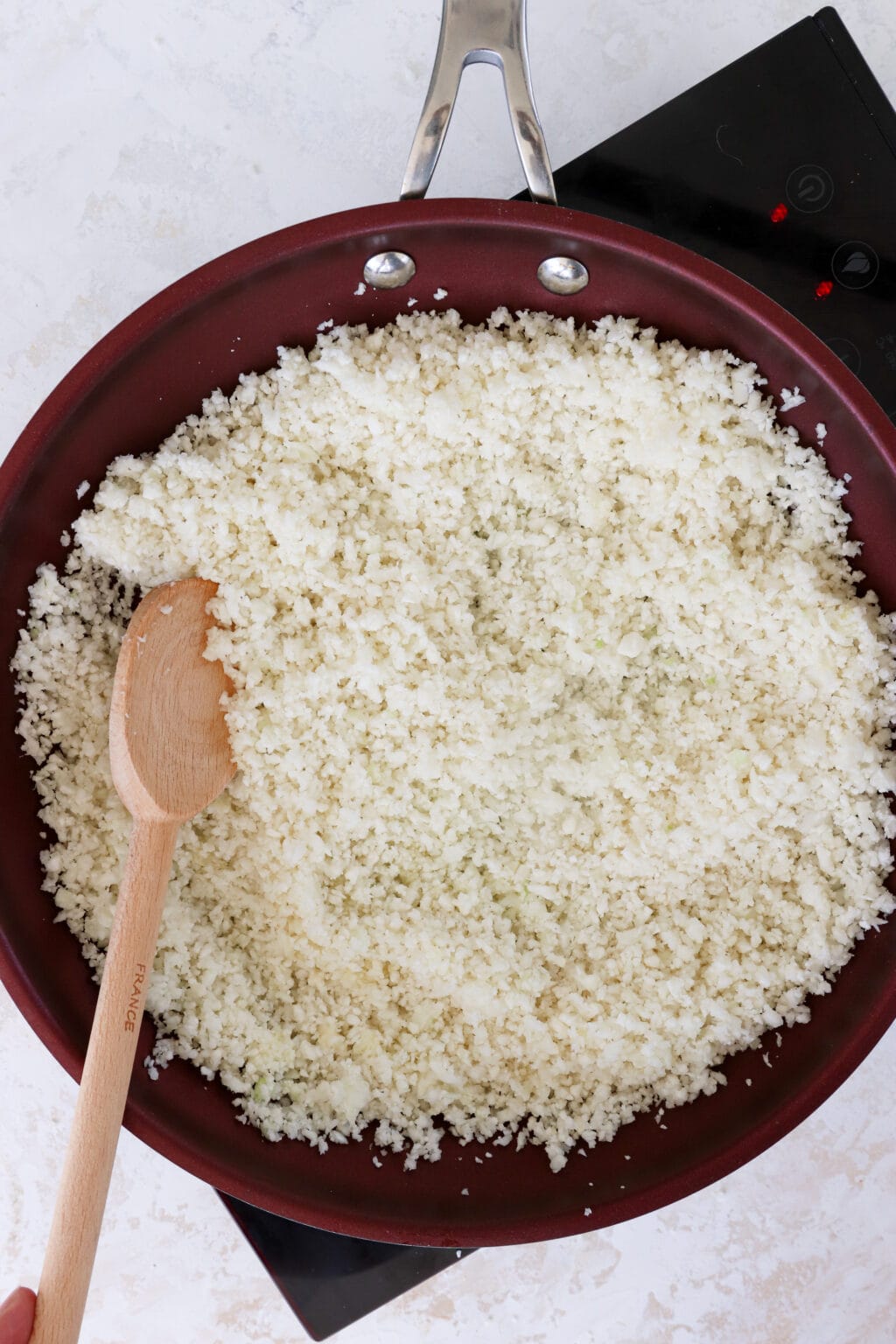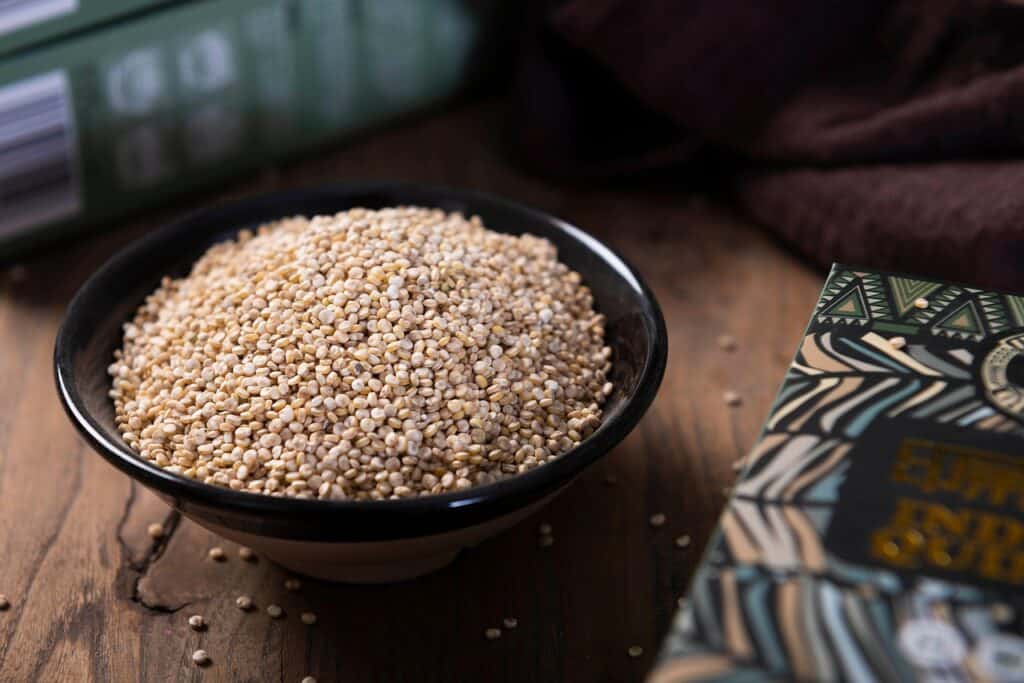Craving rice but watching your carbs? You’re not alone. Finding the best low carb rice alternatives can help you stay on track without feeling deprived.
White and brown rice are loaded with carbs—just one cup can derail your keto or low-carb diet.
A single serving of white rice packs 45g of carbs, while most low-carb diets recommend 20-50g per day. That’s a big problem if rice is your go-to dish!
Luckily, there are delicious, low-carb swaps that mimic rice’s texture and taste so you won’t miss the real thing.
With these alternatives, you can enjoy “rice” bowls, stir-fries, and more while keeping carbs in check.
So, what are the best low carb rice alternatives? Let’s start with the most popular choice, cauliflower rice!
1. Cauliflower Rice: The Ultimate Low Carb Rice Alternatives

Cauliflower rice is one of the best low-carb rice alternatives, becoming a fan-favorite for anyone following a low-carb diet. Its versatility and rice-like texture make it an excellent choice for those looking to reduce carbs in their meals.
With just 0.9 grams of net carbs per 50 grams cooked. Cauliflower rice is the top choice for anyone seeking a low carb rice alternative.
Preparing cauliflower rice is simple: either grate a head of cauliflower or buy pre-riced versions from the store.
You can steam it for 5-7 minutes, sauté it with a bit of oil and garlic for 8-10 minutes, or microwave it for 4-5 minutes.
Its mild flavor absorbs seasonings well, making it perfect for stir-fries, curries, or as a base for protein-rich dishes.
In addition to its low-carb benefits, cauliflower rice is packed with vitamins C and K, aiding in immune support and bone health. It’s a nutrient-rich option that adds more vegetables to your plate without the carbs.
Now that we’ve covered cauliflower rice, a go-to for many low-carb enthusiasts, let’s explore another impressive rice substitute that offers zero carbs, shirataki rice.
2. Shirataki Rice

Shirataki rice, made from konjac root, is a game-changer for low-carb dieters. Containing just 0.6 grams of net carbs per 50 grams cooked, with virtually no calories, shirataki rice is a must-try if you’re following a strict keto or low-carb diet.
Known for its high fiber content, shirataki rice helps with digestion and keeps you fuller for longer. To prepare, rinse it well to remove its natural odor, then briefly boil it and dry-fry it to enhance its texture. It’s chewy and works well in Asian-inspired dishes like stir-fries, sushi bowls, and soups.
Shirataki rice’s texture makes it an excellent substitute for traditional rice and is perfect for those on a keto diet or anyone looking for low carb rice options that won’t spike blood sugar.
Shirataki rice is a great choice for those on a very strict low-carb plan, but if you’re looking for something with a bit more substance, let’s move on to lentils.
3. Lentils: Another Perfect Options for Low Carb Rice Alternatives

Lentils come in many different types, including green, red, and black, each offering unique textures and cooking times.
Green lentils hold their shape well, making them great for salads. Red lentils cook quickly and become soft, ideal for soups and curries.
Black lentils have an earthy flavor and firm texture, perfect for hearty dishes.
While lentils might not be the first thing that comes to mind when considering rice substitutes, but they’re an excellent choice with 6.1 grams of net carbs and 4.5 grams of protein per 50 grams cooked.
Rich in fiber, iron, and folate, lentils provide sustained energy and promote heart health. Cooking lentils is straightforward: rinse them, boil in water until tender, and season as desired.
They add a hearty texture to meals and pair well with vegetables, lean meats, and flavorful sauces.
Whether you’re making a lentil pilaf, adding them to salads, or using them as a base for curries, lentils bring a wholesome, protein-packed alternative to your low-carb meals.
4. Wild Rice

Though technically a grass, wild rice offers a rice-like texture with a nutty flavor, containing 9.8 grams of carbs and 4.5 grams of protein per 50 grams cooked.
Compared to white rice, which has about 22 grams of carbs per 50 grams cooked, wild rice is significantly lower in carbs and higher in protein.
It’s also richer in fiber than brown rice, making it a filling option for low-carb eaters.
To prepare wild rice, rinse it thoroughly, boil it in water until tender, and fluff with a fork. Its robust flavor complements a variety of dishes, from hearty stews to light salads.
Wild rice also provides essential minerals like magnesium and phosphorus, supporting bone health and energy production.
For those looking for a slightly higher-carb option that’s still nutrient-dense, wild rice is a fantastic pick.
5. Mushroom

Mushroom rice is a flavorful and low-carb alternative with only 1.5 grams of net carbs and 1.1 grams of protein per 50 grams cooked.
Finely chopping mushrooms creates a rice-like texture that’s savory and satisfying. Cooking mushroom rice involves sautéing chopped mushrooms with garlic, onions, and a splash of broth until tender.
The umami-rich flavor makes it an excellent base for dishes like stir-fries, risottos, or stuffed vegetables.
Mushrooms are also a great source of antioxidants and B vitamins, supporting overall health. This easy-to-make substitute brings a rich taste to your low-carb meals while keeping the carb count low.
For extra detail, try a quick mushroom rice recipe: sauté chopped mushrooms with garlic and onions in olive oil for 5-7 minutes, add a splash of vegetable broth, and season with thyme, salt, and pepper for flavor.
6. Quinoa

Quinoa stands out as a protein-rich seed, offering 9.3 grams of carbs and 2.2 grams of protein per 50 grams cooked.
While slightly higher in carbs than other substitutes, quinoa is gluten-free and packed with essential amino acids, making it a complete protein.
Preparing quinoa is easy: rinse it to remove bitterness, soak it for a few hours to improve digestion, then boil in water until fluffy, and season to taste.
Its slightly nutty flavor pairs well with roasted vegetables, grilled meats, or as a base for bowls.
Try serving quinoa with avocado, black beans, and lime for a refreshing salad, or mix it with spinach, feta, and olive oil for a Mediterranean twist.
Quinoa also provides fiber, iron, and magnesium, making it a nutritious choice for those who need an occasional higher-carb alternative in their low-carb journey.
Conclusion
Switching to a low-carb diet doesn’t mean giving up on rice-like textures and flavors. From the versatile cauliflower rice to the fiber-rich shirataki rice, and protein-packed lentils to the nutty wild rice, there’s an option for every palate.
Mushroom rice adds savory depth, while quinoa offers a protein boost when you need it. Try these seven low-carb rice alternatives in your meals to stay on track with your diet goals.
Which one will you try first? Share your thoughts and favorite recipes in the comments below. Check out our other low-carb resources here and here, and explore more low-carb meal ideas with us!